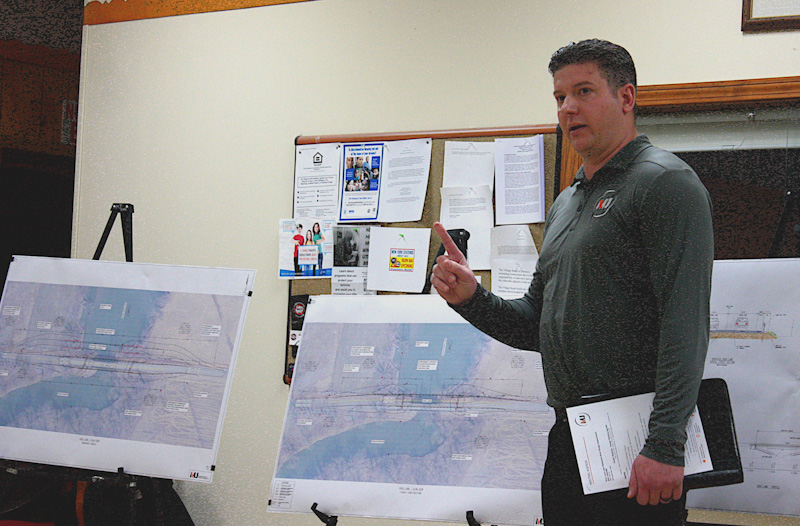By EJ Conzola II
A public hearing on a $3 million proposal to replace a one-lane bridge that provides access to three residences and a private golf course drew more than a dozen residents of the area, who voiced concerns about the project’s effect on flooding in the region.
Replacement of the bridge is necessary because it has been “red-flagged” by the state Department of Transportation, meaning its condition makes it potentially dangerous to use, said Michael R. Breault, a senior engineer with the Washington County Department of Public Works, which is responsible for the structure’s maintenance.
The weight limit for the bridge has already been reduced to seven tons, meaning it cannot be used by fire trucks and is questionable for use by ambulances, Breault told those who turned out for the hearing. The inability of emergency vehicles to use the bridge could create liability issues for the Town of Whitehall if there were a fire or medical emergency on the west side of the bridge – which can only be reached via the bridge – said town Supervisor John Rozell.
But neighbors who turned out for the March 20 hearing were more concerned about the impact of the bridge project on the annual flooding of the Mettawee River, which flows under the bridge.
Several pointed out that the land around the bridge floods almost every year and voiced concerns that the design of the replacement bridge – which would lower the bridge deck – would make the flooding even worse. The lower bridge would be more likely to trap debris carried by the river during floods, causing the watercourse to back up even more than it now does, they said.
The bridge could also create the same problem with the ice jams responsible for the annual spring flooding, neighbors said.
The flood waters could affect Upper Turnpike Road, which roughly parallels the river, and the houses along it, they added.
But Eckert said the redesigned bridge would mitigate – but not eliminate – the flooding. The new bridge would be twice as long as the existing bridge, meaning more water could flow under it more quickly, allowing more debris to pass under it rather than build up and block the flowing water, he said. The more rapid flow would also help prevent ice jams from forming, he said.
The project would also reduce the “hump” that marks the existing bridge and extend the road approaches, he added.
Although the new bridge deck would be lower than the existing deck, there would still be plenty of clearance under it for high water and debris, town Highway Superintendent Louis Pratt noted.
Engineers are currently studying two options for building the bridge – both of which would transform it from one lane to two. One option would involve the construction of a temporary bridge just north of the existing structure, allowing contractors to remove the bridge while permitting traffic to cross the Mettawee. The second would be a “staged” construction, in which the added second lane would be built adjacent to the existing bridge. Once the lane was completed, traffic would be rerouted over it while the existing bridge was demolished and replaced, he said.
The staged proposal is projected to cost about $3 million, and the temporary bridge proposal would add about $200,000 to that total, Eckert said.
The original proposal carried an estimated cost of roughly $630,000.
Some residents also raised questions about the cost of the project, particularly the impact on local taxes. Eckert noted that 80% of the construction costs will be covered by federal funding; 15% by state funding and the remaining 5% by Washington County.
If the county does not take advantage of the available federal and state funding now, the bridge will have to be replaced in the future at a cost borne entirely by local taxpayers, Breault noted.
The designs for the project are still preliminary, Eckert said. Construction is not expected to begin until June 2025, with completion expected in November 2026, he said.
The lengthy construction timeline is a reflection of the size of the project and the limited availability of materials in the wake of supply chain problems that linger from the COVID-19 pandemic, he said.




